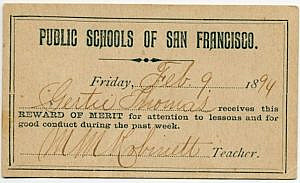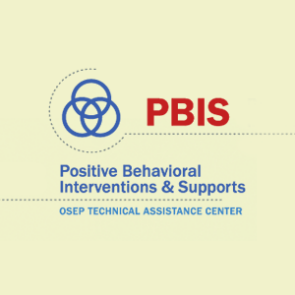The Undeniable Truth of Positive Behavior through a Reward Program!
Educators are always looking for ways to encourage positive behavior. Going to great lengths to spark enthusiasm into the learning process. Creating beautiful charts, dangling paper money or tokens into the equation, and offering gadgets and events as cash in rewards. But is a reward program an effective way to change bad behavior to good behavior in an academic setting? Let’s look into the research behind this trend and discuss various reward programs currently being used.
History
Rewards in the classroom as a way to structure your behavior management policy is not a novel approach. As far back as the 1800’s teachers began to give out certificates called “Rewards of Merit”. This proved to be a more effective way to curb the behavior of their “unruly charges” rather than the dunce cap.
Since the introduction of “Rewards of Merit” certificates into the classroom, behavior has been monitored and manipulated by all sorts of incentive techniques. Some of the more popular incentives include:
- Play money
- Tokens
- Stickers
- Colored cards
- Popsicle Sticks
- Check list
Research
The National Association of Special Education Teachers
According to The National Association of Special Education Teachers or NASET, their research into the effectiveness of a token economy to increase appropriate behavior was very promising.
Here is a graph of one of their findings. Using only three targeted behaviors, the graph shows a decrease in behaviors through a reward system.
The Conversation
An article written on theconversation.com titled: The Power of Rewards and Why We Seek Them Out, provides interesting insight into the do’s and don’ts of rewards. They state that there are two types of rewards:
- Consistent reinforcement – a good way to train a new behavior
- Intermittent reinforcement– strongest way to maintain a behavior
This article also points out that when people make the argument that rewards for children only make them curb their behavior for extrinsic reasons and not intrinsic motivation, we should look at, as a society, the fact that rewards are all around us and they are a very important part of our lives.
- Shopping reward points
- Social media “clicks” and “likes”
- Online gaming
- Pay Check
- School grades and report cards
PBIS
PBIS or Positive Behavior Intervention + Support is a trend in its self. It is becoming the face of classroom and school-wide behavior support and management. More than 25,000 schools are implementing this program schoolwide.
Based on a tier framework, it provides a point system with positive rewards to reduce student discipline. Many schools adapt a paper ticket system in order to comply with the point system. These tickets are then turned in for various types of rewards or incentives.
According to PBIS’s own research, the implementation of this program has its problems. The excitement and implementation does not sustain past the first year. Schools tend to lose momentum to the point of abandoning the program in about 58% of the cases.
The framework for this program to run effectively,
- takes time
- needs buy in and collaboration from staff and students
- needs consistent and constant data collecting
PBIS is a great framework for behavior modification, but it’s just that: A framework. Each school has to modify it to work for them. That is where the breakdown comes into play. There is not enough communication between teachers and administration to discuss what is working. There is no time to rework what isn’t working. The tier framework becomes a one size fits all.
Standard Reward Systems
Star charts, colored card and light charts, and paper money and tokens are programs that have been around for years. They come in various shapes and sizes. Depending on the creativity of the teacher, these programs can be very eye appealing. But are they effective and efficient?
Charts and tokens
Pros:
- Colorful
- Visual for all
Cons:
- Made of paper (not eco-friendly)
- Visual for all ( privacy issues)
- Time consuming (printing paper, recording stars, switching cards)
- Degrading/shaming aspect
- School bucks get lost or destroyed
- Manual accountability/data collecting (if any)
- 2 out of 4 cannot be reused
Technology-Based Reward Programs
Technology-based Reward Programs are slowing coming into play. These are online programs that engage students into the process. Teachers are discovering new resources to try and bring 21st century learning into their behavior program. But are these programs any better?
Technology-based Rewards
Pros:
- Can eliminate some paper tokens
- Use of technology
- Data collection and accountability is stored
- Many are free for teachers or with limited access
- More private
- More student engagement
Cons:
- Some school divisions require approval
- Need access to technology on a regular basis
- No tactile or tangible product
- Possible fees
The Bottom Line
If you really look at the behavior reward programs being implemented, you will see that most programs benefit the teacher, not the student. These programs don’t teach any kind of academic skill. They tend to lean towards the consistent reinforcement model, which then masquerades as the “one size fits all” equation.
When developing a behavior reward program that fits your needs, you need to consider, first and far most: How will it benefit your students?




